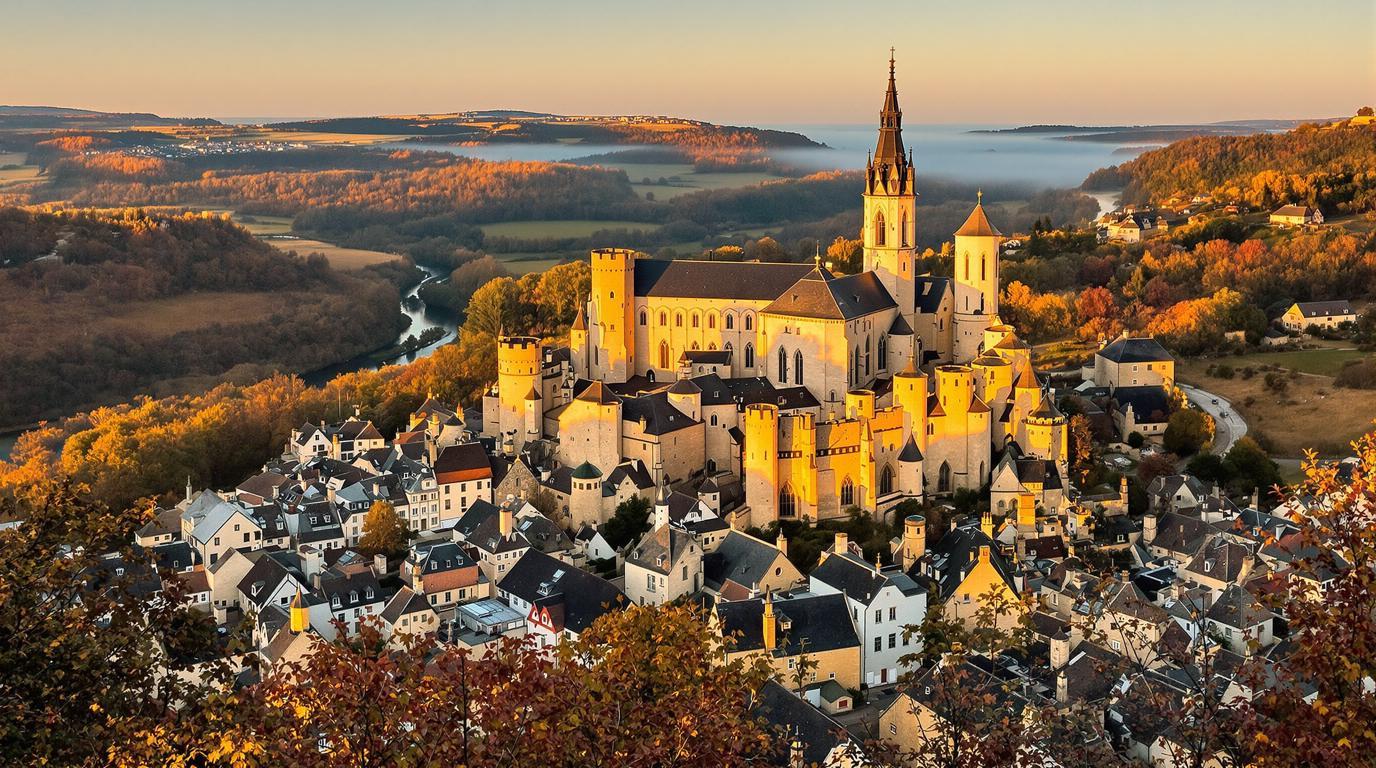Nestled along the picturesque Authie River in northern France lies a hidden treasure that even seasoned Francophiles often overlook. Auxi-le-Château isn’t just another dot on the map—this medieval commune of 2,500 residents serves as the beating heart of Auxilois, a collection of 16 charming municipalities where authentic French countryside living remains wonderfully preserved.
A castle town where history whispers from every corner
The name “Auxi-le-Château” isn’t just for show. The ruins of a formidable 12th-century fortress still crown the town, offering visitors a glimpse into the strategic importance this settlement once held. While exploring these medieval remnants, you’ll feel transported to a time when knights and nobles walked these same paths, much like the transformed Spanish railway stations that connect visitors to hidden histories.
Flamboyant Gothic splendor in unexpected places
The Église Saint-Martin stands as the town’s architectural crown jewel. This 16th-century church exemplifies the Flamboyant Gothic style with its ornate details and three majestic naves. The building’s striking presence against the backdrop of humble town houses creates a visual contrast that photographers find irresistible.
“Our church may not be as famous as Notre-Dame, but its proportions and details are perfect for our community—it tells our story,” explains Marie Dupont, a local historian who frequently guides visitors through the town’s landmarks.
The Authie Valley: A nature lover’s paradise
The verdant Authie Valley cradles Auxi-le-Château in a biodiverse embrace that rivals the natural beauty found in Africa’s wildlife experiences. Twelve marked hiking trails invite explorers to discover forests, meadows, and riverside paths where kingfishers dart across the water’s surface. Dawn brings a magical mist that hovers over the river, creating ethereal landscapes worthy of impressionist paintings.
A living museum of traditional architecture
Walking Auxi-le-Château’s winding streets reveals a collection of 17th and 18th-century houses that seem frozen in time. Traditional building methods featuring local stone, rendered brick in ochre and yellow tones, and steeply pitched slate roofs create a visual harmony that modern developments rarely achieve.
Beyond the town: Day-trip treasures
Auxi-le-Château makes an ideal base for exploring regional gems. History buffs will appreciate the Azincourt Battle Museum just 35km away, where the famous 1415 battle (known to English speakers as Agincourt) comes to life through interactive exhibits. For art enthusiasts, the Louvre-Lens Museum offers world-class collections without the crowds of its Parisian parent, similar to how lesser-known Greek islands provide sanctuary from tourist hordes.
Cultural immersion for 2025 travelers
The Museum of Arts and Folklife housed in a former rectory is expanding its workshop offerings for 2025. Visitors can learn traditional crafts alongside locals, providing the kind of authentic cultural exchange that many travelers now prioritize over passive sightseeing.
“What makes Auxi special is that we haven’t changed our way of life to accommodate tourism—visitors step into our authentic daily rhythms,” notes Pierre Lefebvre, a third-generation baker whose morning bread still draws lines of locals.
Where to stay: Charm over luxury
Accommodations in Auxi-le-Château favor character over opulence. Small guesthouses and B&Bs offer personal touches that chain hotels can’t match. For those seeking alternative options, Caravaning Les Garennes provides comfortable settings for nature-oriented stays, creating experiences as unique as swimming among ancient Roman columns in Turkey’s thermal waters.
The spiritual side: Commonwealth war graves
The churchyard contains five Commonwealth graves from World War I, creating a poignant reminder of the region’s role in global conflicts. These meticulously maintained granite headstones draw visitors seeking connection to history’s watershed moments.
When to visit: The golden seasons
April through September offers ideal conditions for exploring Auxi-le-Château’s outdoor treasures. The walking trails bloom with wildflowers in spring, while summer brings perfect picnicking weather along the Authie’s banks. Fall paints the surrounding forests in spectacular amber and crimson, rivaling the beauty of Greece’s ancient footpaths in autumn.
In Auxi-le-Château, France reveals itself not through grand monuments or tourist spectacles but through the gentle rhythms of provincial life. Here, in this unassuming riverside town, travelers discover what many seek but few find—an authentic slice of French heritage where everyday beauty takes center stage and visitors depart feeling not like tourists, but like temporary locals.
